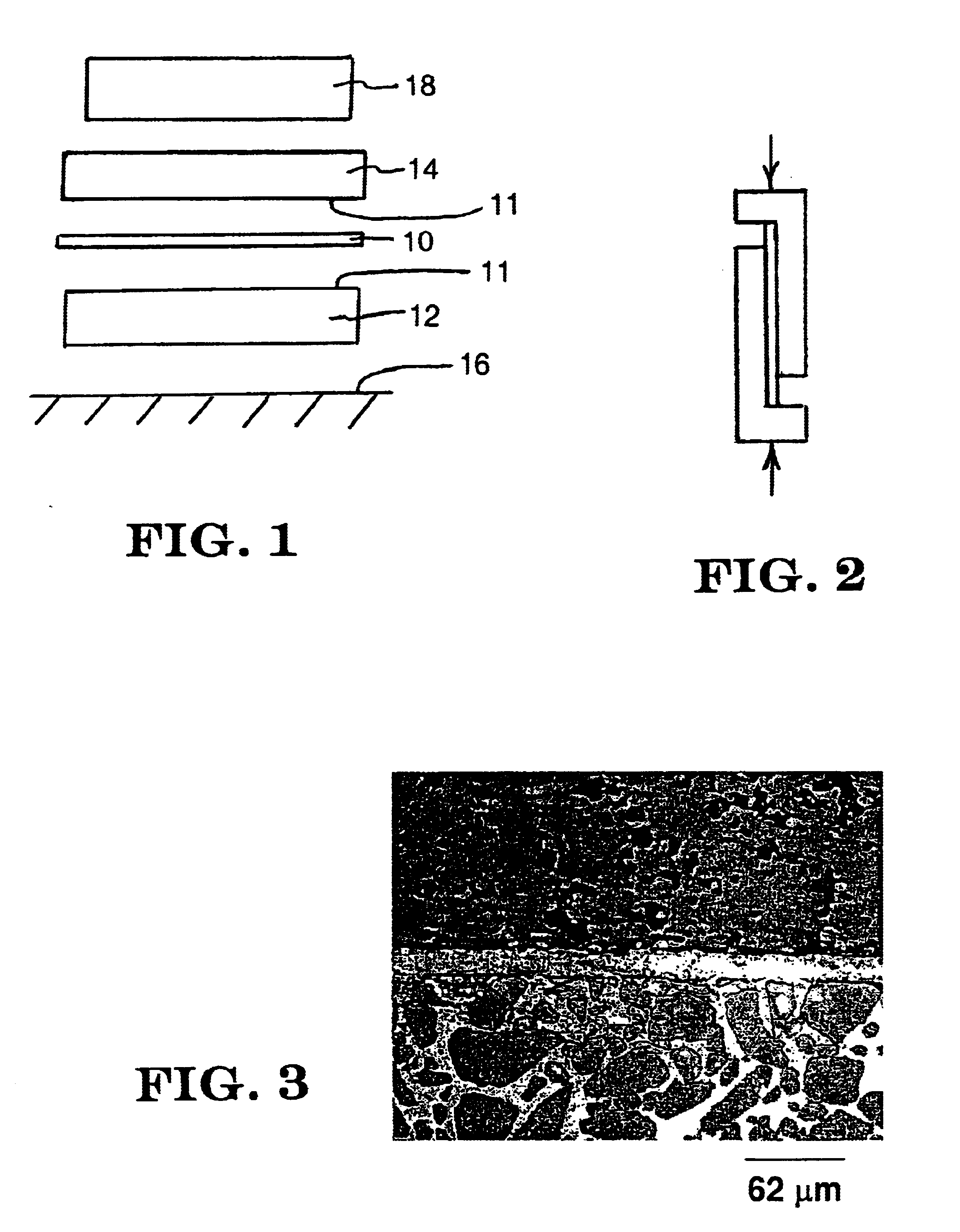Method for brazing ceramic-containing bodies, and articles made thereby
- Summary
- Abstract
- Description
- Claims
- Application Information
AI Technical Summary
Benefits of technology
Problems solved by technology
Method used
Image
Examples
example 1
[0058]This example demonstrates, among other things, the brazing of two aluminum-containing RBSC plates to one another, and the measurement of the strength of the resulting brazement.
[0059]In this example, both members were Grade HSC-701 RBSC composite material (M Cubed Technologies, Inc., Monroe, Conn.) whose metal phase contained about 60 percent by weight of aluminum, balance silicon. The bonding surfaces were metallized with aluminum. The above-identified brazing procedure successfully bonded the pieces to one another. The calculated shear stress at failure was about 103 MPa
example 2
[0062]This example further demonstrates the brazing of two aluminum-containing RBSC bodies to one another. In this example, both members were Grade HSC-703 RBSC composite material (M Cubed Technologies, Inc., Monroe, Conn.), whose metal phase contained about 22 percent by weight of aluminum, balance silicon. As in Example 1, the coating on the bonding surfaces was aluminum. The brazing procedure was successful in bonding the bodies together. The calculated shear stress at failure was about 93 MPa
example 3
[0063]Example 2 was repeated, except that no metallization coating was applied. Unlike Comparative Example 1, where no bond resulted, here the RBSC bodies were successfully brazed according to the above-mentioned brazing procedure, with a resulting shear strength of about 35 MPa.
PUM
| Property | Measurement | Unit |
|---|---|---|
| Fraction | aaaaa | aaaaa |
| Fraction | aaaaa | aaaaa |
| Fraction | aaaaa | aaaaa |
Abstract
Description
Claims
Application Information
 Login to View More
Login to View More - R&D
- Intellectual Property
- Life Sciences
- Materials
- Tech Scout
- Unparalleled Data Quality
- Higher Quality Content
- 60% Fewer Hallucinations
Browse by: Latest US Patents, China's latest patents, Technical Efficacy Thesaurus, Application Domain, Technology Topic, Popular Technical Reports.
© 2025 PatSnap. All rights reserved.Legal|Privacy policy|Modern Slavery Act Transparency Statement|Sitemap|About US| Contact US: help@patsnap.com

